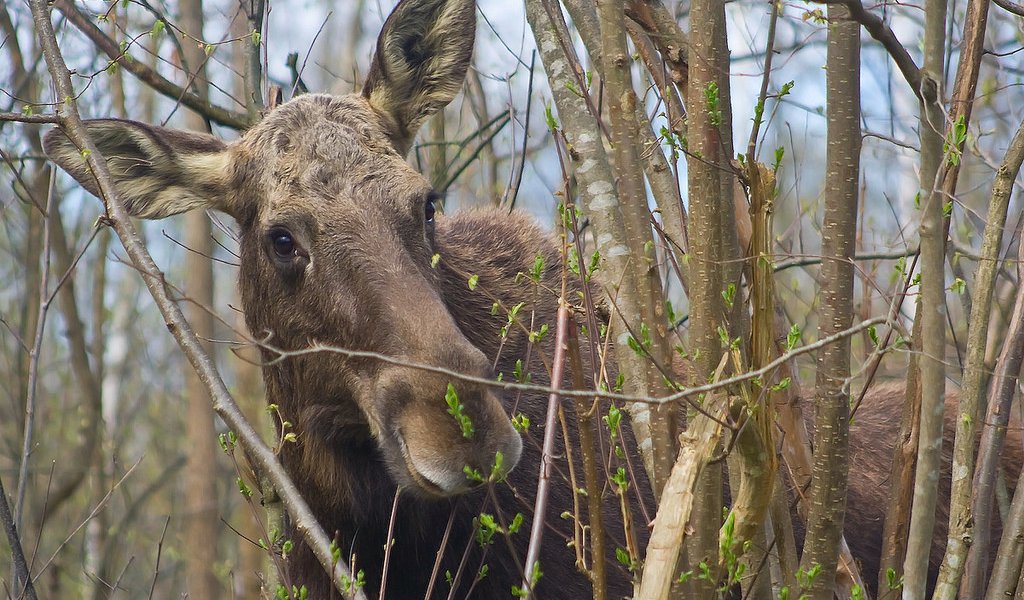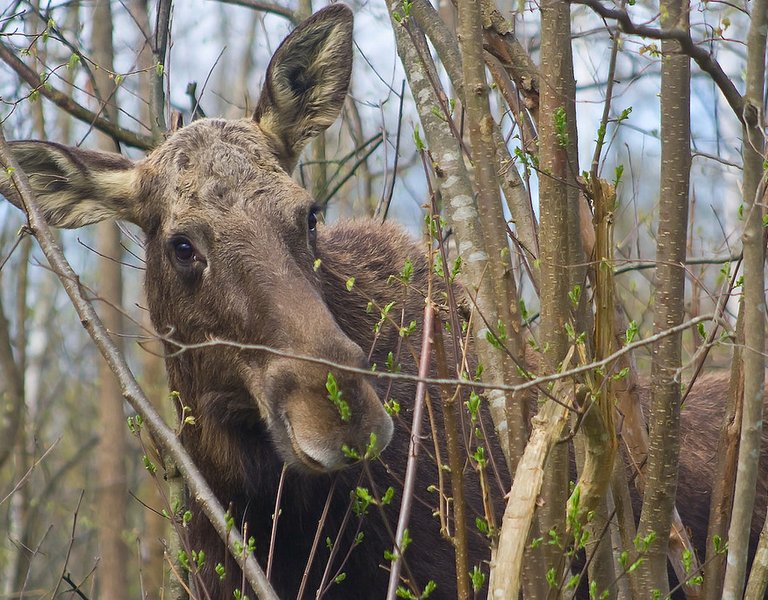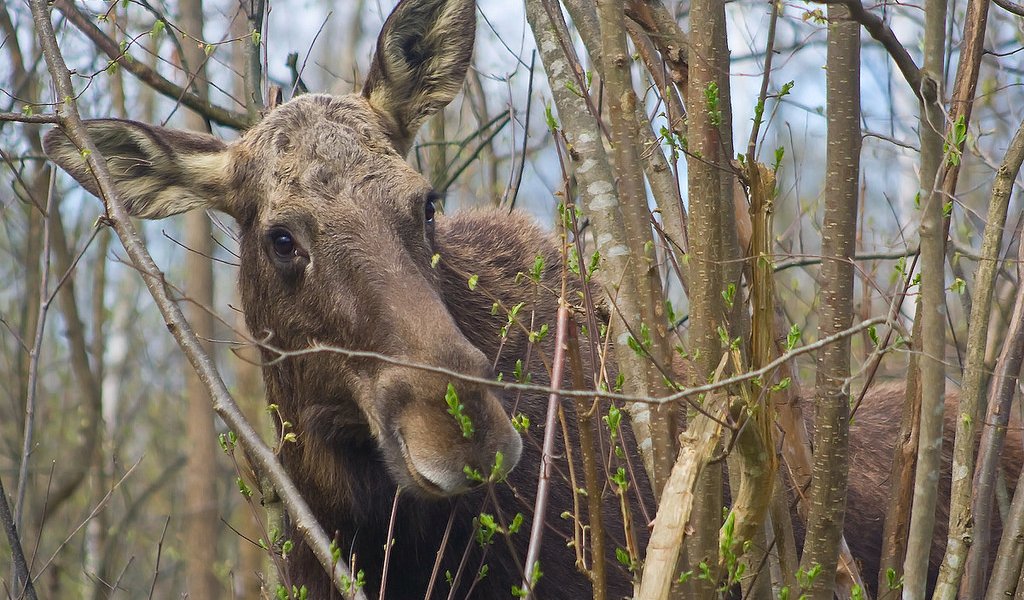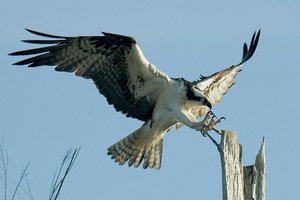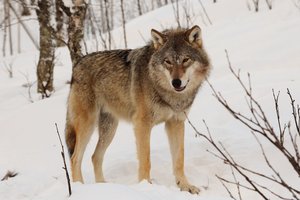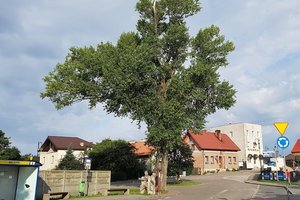Survivors - Animals that Survived Thanks to Polish Naturalists
Poland is home to expansive green areas and abundant in regions that can provide a natural habitat for different animal species. Nonetheless, many of them are at risk of extinction. Luckily, this process is often reversible - Polish researchers and environmentalists have demonstrated many times that endangered animal species can be successfully saved from extinction.
Endangered animal species in Poland are listed in the Polish Red Book of Animals, which features several hundred species. The Red List of Threatened or Endangered Animals in Poland has a wider scope with more than 2,500 species. Animals are classified depending on the degree of risk – from the LC category for species in the lowest risk group to EX, or extinct species. The extinct category contains only (or as many as) two species - the tarpan (the Eurasian wild horse) and the auroch (a large mammal in the Bovidae family). Meanwhile, the list of species saved from extinction by Poles is much longer. Here are selected examples:
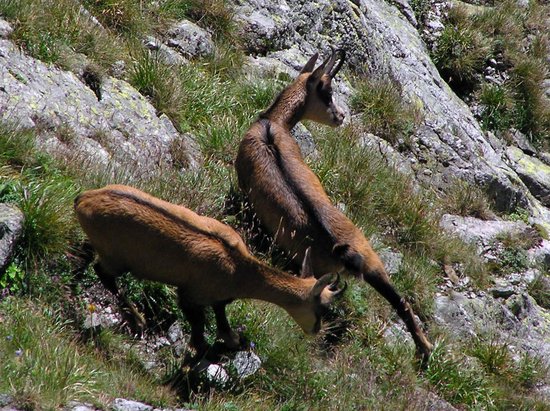 The Tatra Chamois (Rupicapra rupicapra tatrica)
The Tatra Chamois (Rupicapra rupicapra tatrica)
It lives mainly in the Tatras, a sprawling mountain range straddling the southern Poland and Slovakia. Being a typical mountain animal, it spends most of its life in mountain pastures, amid rocky peaks and at the tree line (1,700-2,200 m above sea level). The chamois was eagerly hunted because nearly all its parts are useful. Even its horns and chamois fat, which was believed to have medicinal properties, were used. As a result, the chamois had almost become extinct in the mid-19th century. Thanks to efforts by the Physiographic Committee of the Krakow Scientific Society, in particular Professor Maximilian Nowicki and Dr Eugeniusz Janota, on 5 October 1868, the National Parliament in Lvov adopted a law that prohibited the capture, extermination and sale of Alpine animals native to the Tatras - marmots and wild goats. It was the first time parliament passed an act to ensure the protection of animal species.
There were 36 chamois living in the Tatras in 1888. Just before World War I, their population increased to more than 130 individuals, but World War II reduced its number precipitously to a mere 27 animals. Today, the Tatras are home to approx. 500 chamois, including 100 living on the Polish side.
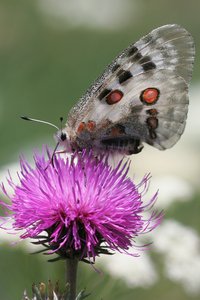 The Apollo (Parnassius Apollo)
The Apollo (Parnassius Apollo)
This is one of the largest butterflies on our continent with a wingspan of up to 8 cm. It was described as early as in 1865 by Maksymilian Siła-Nowicki, a Polish zoologist and co-founder of the Tatra Society. The Apollo was once common throughout Poland, but a count conducted in 1991 revealed that only 20-30 butterflies lived in the Tatras and the Pieniny.
The Institute of Nature Conservation in Krakow launched conservation measures to save the species. Researchers collected larvae to breed the butterflies and later crossed them with a handful of their kin living in the wild. They also increased the area of distribution of the Apollo’s host plant, Sedum maximum L. Thanks to these efforts, the current population of the butterfly remains stable, although the Apollo is still listed as CR - a critically endangered species - in the Polish Red Book of Animals. A successful attempt at reintroduction of the Apollo was made in the Sudetes, and its restitution is envisioned in other parts of our country.
The Peregrine Falcon (Falco peregrinus)
This predatory bird species was once common in Europe, including Poland. Today, it is one of the rarest species in our country. Its population began to dwindle in the early 1950s, mainly as a result of widespread application of DDT in agriculture. Believed to be an excellent crop protection chemical, its tragic side-effects included mass contamination of the environment. In the second half of the 20th century, the peregrine falcon population became extinct in Poland.
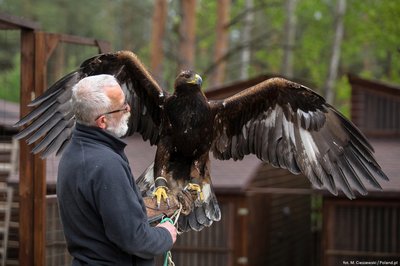 Luckily, reintroduction of the species was launched and the project was largely driven by falconers who developed methods of intensive breeding. Since 1990, reintroduction has been pursued in Poland by six centres, including The Peregrine Falcon Breeding Centre of the University of Agriculture in Kraków and the Polish Falconers Order. Falcons selected for reintroduction are bred with human contact limited to a bare minimum to prepare the birds for release into the wild. Over two decades, 345 falcons have been released, including 291 birds released in forested areas. Following these intensive efforts, approx. 20 peregrine falcon nests may be spotted around the country, for the time being mainly in big cities and the mountains.
Luckily, reintroduction of the species was launched and the project was largely driven by falconers who developed methods of intensive breeding. Since 1990, reintroduction has been pursued in Poland by six centres, including The Peregrine Falcon Breeding Centre of the University of Agriculture in Kraków and the Polish Falconers Order. Falcons selected for reintroduction are bred with human contact limited to a bare minimum to prepare the birds for release into the wild. Over two decades, 345 falcons have been released, including 291 birds released in forested areas. Following these intensive efforts, approx. 20 peregrine falcon nests may be spotted around the country, for the time being mainly in big cities and the mountains.
The European bison (Bison bonasus)
The most celebrated species to be saved, to a large extent, thanks to the efforts of Poles. The European bison is a truly unique animal - it has changed very little since the era when it roamed Europe alongside such species like the mammoth or the sabre-toothed tiger. Unfortunately, decimation of the population of the mighty king of the forest has a long tradition. The European bison became extinct in the British Isles, Sweden, France, Italy and Spain as early as in the 5th century A.D. Over the next centuries, with shrinking forests and hunting, its population was steadily reduced. Demand for European bisons was also driven by a belief in their magic properties. In the Middle Ages, it was believed that a poisoned liquid would froth in a drinking vessel made from European bison’s horn. By the 19th century, European bisons were living exclusively in Poland and the Caucasus.
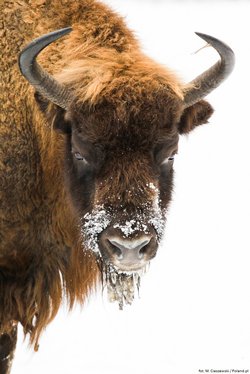 They have survived in Białowieża Forest thanks to Polish rulers, who decreed the area to be crown land. Approx. 250 settlers were brought to the area and tasked with minding the European bisons. Poaching was punished severely. Luckily, after the Partitions of Poland, the tradition of protecting these animals was continued - Tsar Alexander I issued a conservation decree in 1803. He brought new experts to the Forest who began to cultivate the species, but historical turmoil led to a gradual decline in the population. In 1915, Białowieża Forest was home to 985 European bisons. In 1919, when Poland regained its independence, a committee was dispatched to the forest to locate surviving European bisons and ensure their protection, but the only European bison they found was a carcass of a recently killed animal. The world’s last free-living lowland European bison was killed on 19 April 1919. Its Caucasian kin became extinct less than a decade later.
They have survived in Białowieża Forest thanks to Polish rulers, who decreed the area to be crown land. Approx. 250 settlers were brought to the area and tasked with minding the European bisons. Poaching was punished severely. Luckily, after the Partitions of Poland, the tradition of protecting these animals was continued - Tsar Alexander I issued a conservation decree in 1803. He brought new experts to the Forest who began to cultivate the species, but historical turmoil led to a gradual decline in the population. In 1915, Białowieża Forest was home to 985 European bisons. In 1919, when Poland regained its independence, a committee was dispatched to the forest to locate surviving European bisons and ensure their protection, but the only European bison they found was a carcass of a recently killed animal. The world’s last free-living lowland European bison was killed on 19 April 1919. Its Caucasian kin became extinct less than a decade later.
Fortunately, the species survived in zoological gardens. In 1923, during the International Congress for the Protection of Nature in Paris, Polish delegate Jan Sztolcman presented plans for saving the species based on American experiments with the bison. Meanwhile, the Society for the Protection of the European Bison was established the same year. To save the species, its members developed the Pedigree Book of the European bison that charts the origins of all representatives of the species living worldwide.
Thanks to efforts undertaken by Polish zoologists, before the outbreak of World War II Poland was home to 37 of the 115 European bisons living around the world. Unfortunately, its Polish population dwindled in subsequent years. While German occupation continued, the management of Białowieża did not focus on protection of the species and European bisons from the reserve were released into the forest at the end of the war. The local resistance established a special unit to ensure that free-living animals were cared for.
Reintroduction of the European bison after the war should be credited to Dr Jan Żabiński, the pre-war director of the Warsaw Zoo who in tandem with his wife became famous for saving Polish Jews and activities aimed at saving animals during the Nazi occupation. Poland achieved success in reintroduction of the European bison - 38 animals were released in Białowieża Forest from 1952 until 1966. In the following years, European bisons were reintroduced to other parts of the country and were also dispatched abroad to the US, the USSR, and Latin America. Today, there are 1,635 European bisons living in free roaming herds and 238 in herds kept in captivity.
Sources:
Poland.pl
Follow European bisons from Białowieża Forest on-line or watch the most interesting moments on Polish State Forests YouTube channel.
24.10.2018
